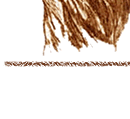








 |
||||||||
 |
 |
 |
 |
 |
 |
 |
||
 |
||||||||
Pre shoot routines — How having one will help your scoresHello and thanks for taking the time to check out FVCTC's web site! For this latest article, I felt I should address the subject of pre-shoot routines and why developing one can lead to better scores. First off let me say that everyone can focus/concentrate at different speeds, but I do recommend taking the time to go through a pre-shoot routine slowly at first until it becomes second nature and can be done every time without being distracted etc. The following I am going to describe to you is the pre-shoot routine that I use. I usually start from post 1, so there are a couple of things I pay attention to that are a little different than starting from other posts. These are mainly procedure things and a shooter does not have to focus on these except when starting a round. If you are shooting post 1 to start a round first, make sure you have your score sheet. From that point give it to the scorekeeper and make sure that all info is correct and that all the shooters listed are present. I usually ask the scorekeeper if the trap is turned on and if there is anybody in the trap house, and if they are staying in as a loader until the round is completed. Always check for the orange cone on the top of trap house. This normally indicates that there is someone in the trap house. Once the scorekeeper indicates the trap is ready to shoot, I will ask the squad if they are ready. If they are, I call for a see-target. This target is important; I see a lot of post 1 shooters call for this target and not even look. This target is normally called for to see if they are coming out of the house correctly and also to be observed for how high or low, etc. Do not ignore this target! Checking this target should be the first part of your focusing on the target presentations to be shot at. This would be a good time to check and see how the wind/breeze is affecting the flight path of the target, e.g., wind at your back causes the targets to be pushed down; wind in your face causes the targets to be pushed upward in their flight. The following is the shot sequence that I use. It might not work for everyone, but if you develop a pre-shoot sequence that works for you it will help you focus and your scores will go up. Remember a big part of this game is mental focus.
I hope that this gives you some things to work on this week and beyond. Next time we will break the pre-shoot sequence down a little more so that you can fine-tune what you are doing. Thanks for supporting FVCTC |
George Miletich, Jr. |
|||||
|
|
||||||